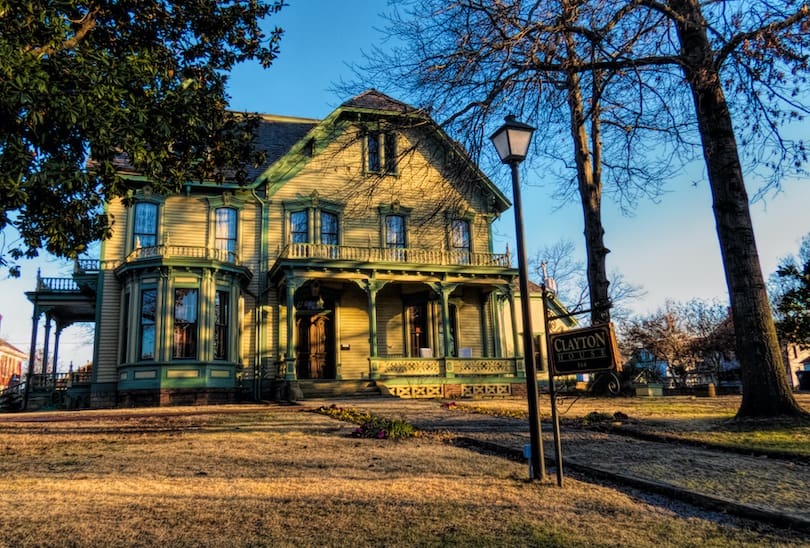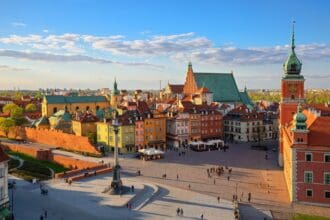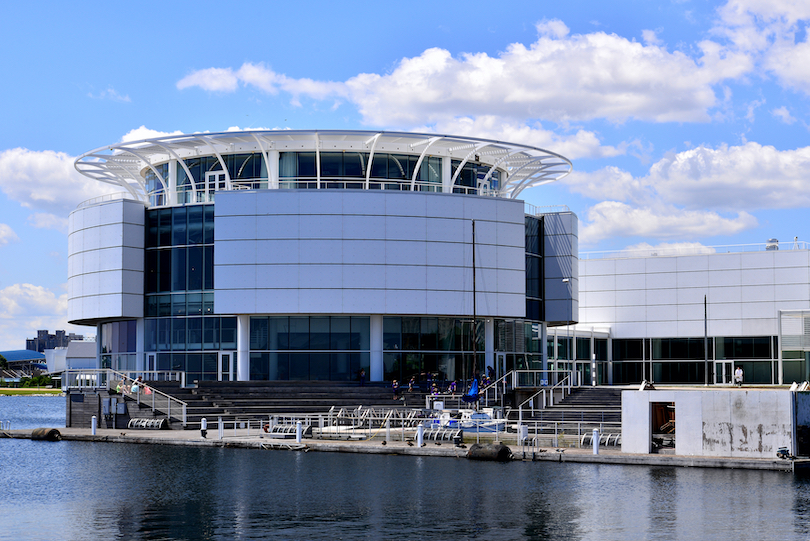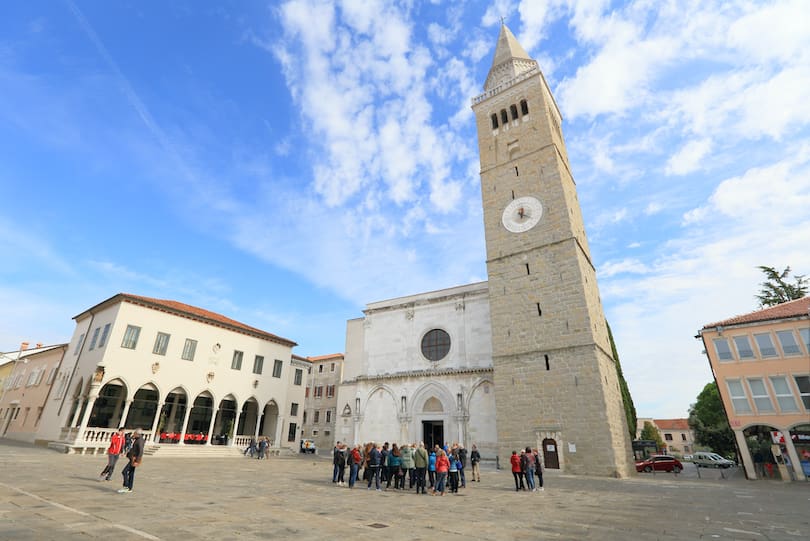The Rocky Mountains , stretching across the western United States, are a breathtaking natural wonder that has captivated travelers for centuries. Spanning multiple states, this majestic mountain range is home to some of the most stunning landscapes in the world. From towering peaks and alpine lakes to dense forests and vibrant wildlife, the Rocky Mountain states provide endless opportunities for exploration and discovery. In this comprehensive guide, we’ll delve into six of the most beautiful Rocky Mountain states—Colorado, Montana, Wyoming, Idaho, Utah, and New Mexico—uncovering their unique attractions, outdoor activities, cultural significance, and travel tips to help you plan your next unforgettable journey.
Why the Rocky Mountain States Are a Must-Visit Destination
Before diving into the specifics of each state, let’s explore why the Rocky Mountain region has captured the hearts of travelers worldwide. The combination of dramatic scenery, diverse ecosystems, and rich history makes these states an ideal destination for adventurers, nature lovers, and culture enthusiasts alike. Whether you’re seeking solitude in the wilderness or vibrant city life surrounded by mountains, the Rocky Mountain states have something for everyone.
A Natural Wonderland
The Rockies are renowned for their unparalleled natural beauty. Towering peaks like Colorado’s Mount Elbert and Wyoming’s Grand Teton rise dramatically against the horizon, while pristine alpine lakes such as Montana’s Lake McDonald reflect the surrounding landscape like mirrors. These mountains also serve as a haven for wildlife, with elk, bison, bears, and moose roaming freely in protected areas.
Diverse Ecosystems
One of the most fascinating aspects of the Rocky Mountains is their ecological diversity. From high-altitude tundra and subalpine forests to grasslands and deserts, the region supports a wide variety of plant and animal species. For instance, Colorado’s Maroon Bells are surrounded by aspen groves that turn golden in the fall, while Idaho’s Sawtooth Range features rugged granite peaks interspersed with glacial lakes.
Seasonal Beauty
Each season brings its own magic to the Rockies. Springtime sees wildflowers blooming across meadows, while summer offers long days perfect for hiking and camping. Autumn transforms the landscape with fiery foliage, and winter blankets the mountains in snow, creating a playground for skiers and snowboarders.
Commitment to Conservation
The region is also celebrated for its commitment to preserving its natural treasures. National parks, state parks, and protected areas ensure that visitors can experience the pristine beauty of the Rockies while respecting the environment. For example, Colorado’s Rocky Mountain National Park and Wyoming’s Yellowstone National Park are managed with sustainability in mind, offering eco-friendly facilities and educational programs about local ecosystems.
Sustainable Tourism Efforts
Many towns and businesses within the Rocky Mountain states prioritize sustainable tourism practices. From eco-lodges powered by renewable energy to guided tours that emphasize Leave No Trace principles, there are countless ways for travelers to minimize their environmental impact while enjoying the region’s splendor.
Cultural Richness
Beyond its natural allure, the Rocky Mountain states boast a rich tapestry of cultures and histories. Indigenous tribes like the Blackfeet, Shoshone, and Navajo have called these lands home for thousands of years, leaving behind a legacy of art, storytelling, and traditions. Additionally, the influence of European settlers during the mining boom of the 19th century has shaped the architecture, cuisine, and festivals of many towns throughout the region.
Indigenous Heritage
The contributions of Native American communities remain integral to the identity of the Rockies. Visitors can learn about their heritage through museums, cultural centers, and immersive experiences. For example, Montana’s Blackfeet Nation offers guided tours of sacred sites, while New Mexico’s Taos Pueblo provides a glimpse into ancient adobe architecture and traditional ceremonies.
Western Lore
The spirit of the Old West lives on in places like Wyoming’s Cheyenne Frontier Days , an annual rodeo and festival celebrating cowboy culture. Similarly, Colorado’s Leadville retains much of its Victorian-era charm, with historic buildings and mines serving as reminders of its silver-mining past.
Year-Round Appeal
One of the most remarkable aspects of the Rocky Mountain states is their year-round appeal. In the summer, visitors flock to hiking trails, rivers, and lakes for outdoor adventures. During the winter, world-class ski resorts transform into snowy paradises, attracting skiers, snowboarders, and snowshoers from around the globe. Spring and fall offer quieter experiences, with blooming wildflowers and golden aspen groves providing a picturesque backdrop for exploration.
Colorado: A Paradise for Outdoor Enthusiasts
Exploring Colorado’s Iconic Landscases
Colorado is perhaps the most famous of the Rocky Mountain states , boasting over 50 mountain ranges and countless opportunities for outdoor recreation. The state’s crown jewel is undoubtedly Rocky Mountain National Park , which attracts millions of visitors annually with its towering peaks, serene alpine lakes, and abundant wildlife. Hiking trails like the Emerald Lake Trail and Longs Peak cater to adventurers of all skill levels, offering awe-inspiring views at every turn.
Rocky Mountain National Park: A Closer Look
Established in 1915, Rocky Mountain National Park spans over 415 square miles and features elevations ranging from 7,860 feet to 14,259 feet. Visitors can drive along the scenic Trail Ridge Road , the highest continuous paved road in the United States, which offers panoramic vistas of the Continental Divide. Wildlife enthusiasts will delight in spotting elk, mule deer, bighorn sheep, and even black bears within the park boundaries.
Hiking Trails for Every Skill Level
For beginners, the Bear Lake Loop is a gentle stroll around a shimmering alpine lake, while intermediate hikers can tackle the Dream Lake Trail , which rewards them with stunning reflections of Hallett Peak. Advanced adventurers might attempt the challenging ascent of Longs Peak , a Class 3 climb that requires scrambling and route-finding skills.
Winter Activities
During the colder months, the park transforms into a snowy wonderland. Cross-country skiing, snowshoeing, and sledding are popular activities, and ranger-led snowshoe walks provide insights into winter ecology.
Mountain Towns with Unique Charm
Beyond the national park, Colorado’s charm extends to its charming mountain towns. Aspen , known for its world-class skiing and upscale amenities, transforms into a haven for hikers and leaf-peepers during the summer and fall. Similarly, Breckenridge combines historic charm with modern attractions, making it a year-round destination for families and solo travelers alike. Other notable towns include Telluride , nestled in a box canyon, and Steamboat Springs , famous for its natural hot springs.
Aspen: More Than Just Skiing
While Aspen is synonymous with luxury skiing, it also offers a vibrant arts scene, with galleries, theaters, and music festivals throughout the year. The Maroon Bells Scenic Area , located just outside town, is a must-visit for photographers and nature lovers.
Breckenridge: A Blend of History and Adventure
Founded during the gold rush of the 1850s, Breckenridge boasts well-preserved Victorian architecture alongside cutting-edge amenities. Visitors can pan for gold, ride the alpine coaster, or simply enjoy the lively Main Street filled with shops and restaurants.
Cultural and Historical Highlights
Colorado’s rich history is deeply intertwined with the mining boom of the late 19th century. Towns like Leadville and Creede preserve this legacy through well-preserved architecture, museums, and annual festivals. Visitors can step back in time by exploring old mines, taking guided tours, or attending events that celebrate the state’s rugged past.
Mining Heritage
During the silver rush of the 1870s, Leadville became one of the wealthiest cities in the West. Today, the National Mining Hall of Fame and Museum showcases artifacts and exhibits detailing the industry’s impact on the region. Creede, meanwhile, hosts the Creede Repertory Theatre , offering live performances in a historic setting.
Ghost Towns and Living History
For those fascinated by abandoned settlements, Colorado is dotted with ghost towns like St. Elmo and Independence . These remnants of the mining era provide a haunting yet intriguing look at the challenges faced by early pioneers.
Travel Tips for Colorado
- Best Time to Visit: Summer (June to August) for hiking and wildlife viewing; winter (December to February) for skiing and snowboarding.
- Must-Try Activities: Whitewater rafting on the Arkansas River, hot air ballooning in Boulder, and stargazing in Great Sand Dunes National Park.
- Local Cuisine: Don’t miss out on Colorado lamb, green chile stew, and craft beers from local breweries.
Montana: Big Sky Country
The Allure of Montana’s Wilderness
Montana, often referred to as “Big Sky Country,” offers vast expanses of untouched wilderness that epitomize the spirit of the Rocky Mountains . Glacier National Park , one of the state’s top attractions, is a UNESCO World Heritage Site renowned for its glacial-carved valleys, turquoise lakes, and rugged peaks. The Going-to-the-Sun Road , a scenic drive through the park, provides jaw-dropping vistas and access to numerous trailheads.
Glacier National Park: A Natural Wonder
Spanning over 1 million acres, Glacier National Park is home to more than 700 lakes, 25 active glaciers, and hundreds of miles of hiking trails. Popular hikes include the Highline Trail , which follows the Continental Divide, and the Grinnell Glacier Trail , where visitors can witness the effects of climate change firsthand. Wildlife sightings are common, with grizzly bears, mountain goats, and bald eagles frequently spotted.
Wildlife Watching
Glacier is part of the Crown of the Continent ecosystem, one of the largest intact ecosystems in North America. Visitors can join guided wildlife safaris to increase their chances of spotting elusive animals like lynx and wolverines.
Scenic Drives
The Going-to-the-Sun Road is not only a marvel of engineering but also a photographer’s dream. Its hairpin turns and sheer cliffs reveal breathtaking views of waterfalls, glaciers, and alpine meadows.
Lesser-Known Gems
For those seeking a more off-the-beaten-path experience, Montana’s lesser-known gems include the Bob Marshall Wilderness Complex and Flathead National Forest . These areas offer solitude and a chance to connect with nature in its purest form. Backpackers can traverse the Continental Divide Trail , while anglers can fish for trout in secluded streams.
Bob Marshall Wilderness Complex
Often called “The Bob,” this 1.5-million-acre wilderness area is a paradise for backpackers and horseback riders. With no roads or motorized vehicles allowed, it’s one of the most remote regions in the lower 48 states.
Flathead Valley
Located near Glacier, the Flathead Valley is a hub for outdoor recreation. Visitors can kayak on Flathead Lake, hike in Swan Range, or explore the quaint town of Whitefish.
Montana’s Rich Indigenous Heritage
The state’s Native American heritage adds another layer of depth to its appeal. Tribes such as the Blackfeet Nation and Crow Tribe continue to play a vital role in preserving Montana’s cultural identity. Visitors can learn about their traditions, art, and history through guided tours, powwows, and museum exhibits.
Blackfeet Nation
The Blackfeet Reservation, located near Glacier National Park, offers immersive cultural experiences. Guests can participate in storytelling sessions, traditional dances, and craft workshops led by tribal members. The Museum of the Plains Indian in Browning showcases artifacts and artwork reflecting the tribe’s enduring legacy.
Crow Fair
Held annually in August, the Crow Fair is one of the largest Native American gatherings in the country. Featuring parades, rodeos, and dance competitions, it’s a celebration of Crow culture and community spirit.
Travel Tips for Montana
- Best Time to Visit: Late spring to early fall (May to September) for optimal weather conditions.
- Must-Try Activities: Fly fishing in the Yellowstone River, horseback riding in the Bitterroot Valley, and exploring ghost towns like Garnet.
- Local Cuisine: Bison burgers, huckleberry pie, and elk steaks are must-try dishes.
Wyoming: Where the Wild West Lives On
Yellowstone National Park: A Geothermal Marvel
Wyoming is home to two of the most iconic national parks in the United States—Yellowstone National Park and Grand Teton National Park . Yellowstone, established in 1872 as the world’s first national park, is a geothermal wonderland unlike any other. Spanning over 2.2 million acres across Wyoming, Montana, and Idaho, Yellowstone boasts an incredible array of geysers, hot springs, mud pots, and fumaroles.
Old Faithful: Nature’s Clockwork
One of Yellowstone’s most famous features is Old Faithful , a geyser that erupts approximately every 90 minutes, shooting boiling water up to 180 feet into the air. Watching Old Faithful erupt is a bucket-list experience for many visitors, but the park offers so much more beyond this single attraction. The Grand Prismatic Spring , the largest hot spring in the United States, mesmerizes visitors with its kaleidoscope of colors created by thermophilic bacteria thriving in the mineral-rich waters.
Wildlife Encounters
Yellowstone is often referred to as America’s Serengeti due to its abundant wildlife. Visitors frequently spot bison roaming freely along park roads, herds of elk grazing in meadows, and even grizzly bears and wolves in remote areas like the Lamar Valley . Wildlife safaris led by expert guides provide opportunities to observe these majestic creatures in their natural habitat while learning about conservation efforts.
Winter Adventures
During the winter months, Yellowstone transforms into a serene, snow-covered paradise. Snowmobiling, cross-country skiing, and guided snowcoach tours allow visitors to explore the park’s frozen landscapes. The Norris Geyser Basin , with its steaming geothermal features, takes on an ethereal quality under a blanket of snow.
Grand Teton National Park: Alpine Majesty
Located just south of Yellowstone, Grand Teton National Park offers a more intimate and rugged experience. The jagged peaks of the Teton Range rise abruptly from the valley floor, creating dramatic vistas that have inspired artists and photographers for generations.
Jenny Lake: A Photographer’s Dream
At the heart of Grand Teton lies Jenny Lake , a glacially-carved body of water surrounded by towering mountains. The Jenny Lake Loop Trail is a popular hike, offering stunning reflections of the Tetons mirrored in the lake’s surface. For a more challenging adventure, hikers can take the Cascade Canyon Trail , which winds through lush forests and alpine terrain.
Climbing and Mountaineering
The Tetons are a haven for climbers and mountaineers. Grand Teton Peak , standing at 13,775 feet, is a coveted summit for experienced climbers. Guided climbing tours cater to beginners looking to learn the basics or advanced climbers seeking technical routes.
Wildlife Encounters
Wyoming’s commitment to preserving its natural ecosystems ensures that wildlife thrives throughout the state. In addition to Yellowstone and Grand Teton, the National Elk Refuge near Jackson Hole provides critical winter habitat for thousands of elk. Visitors can take sleigh rides through the refuge to observe these majestic animals up close.
Wind River Range
For those seeking solitude, the Wind River Range in central Wyoming offers some of the most pristine wilderness in the country. Backpackers can traverse the Continental Divide Trail , while anglers enjoy fishing for cutthroat trout in high-altitude lakes.
Travel Tips for Wyoming
- Best Time to Visit: Summer (June to August) for park visits; winter (December to February) for snowmobiling and cross-country skiing.
- Must-Try Activities: Wildlife safaris in Lamar Valley, soaking in the Granite Hot Springs, and visiting the Devils Tower National Monument.
- Local Cuisine: Try fry bread tacos, trout dishes, and locally sourced beef.
Idaho: Hidden Gem of the Rockies
Sawtooth National Recreation Area: Untamed Beauty
While Idaho may not receive as much attention as its neighbors, it boasts incredible natural wonders that rival any other Rocky Mountain state . The Sawtooth National Recreation Area , located in central Idaho, is a prime example of the state’s untamed beauty. With over 756,000 acres of protected land, the Sawtooths feature dramatic granite peaks, crystal-clear lakes, and miles of hiking trails.
Redfish Lake: A Slice of Paradise
Nestled at the base of the Sawtooth Mountains, Redfish Lake is a favorite destination for outdoor enthusiasts. Its turquoise waters are perfect for swimming, kayaking, and paddleboarding during the summer months. Hikers can tackle the Alice-Toxaway Loop , a multi-day backpacking trip that showcases the area’s stunning alpine scenery.
Thompson Peak: A Climber’s Challenge
Standing at 10,751 feet, Thompson Peak is the highest point in the Sawtooth Range. Advanced hikers and climbers will find the ascent rewarding, with panoramic views of the surrounding wilderness from the summit.
Craters of the Moon National Monument: Otherworldly Landscapes
Idaho’s volcanic origins are evident in landmarks like Craters of the Moon National Monument , where visitors can explore lava fields and caves. This surreal landscape feels like stepping onto another planet, complete with cinder cones, spatter cones, and vast expanses of black basalt.
Caving Adventures
The monument offers several lava tube caves open to exploration, including Indian Tunnel and Dewdrop Cave . Guided ranger programs provide insights into the geology and ecology of this unique environment.
Agricultural Roots and Local Flavors
Idaho’s agricultural heritage shines through in its thriving food scene. The state is best known for its potatoes, but don’t overlook its artisanal cheeses, wines, and farm-to-table restaurants.
Idaho Potatoes
Idaho produces nearly one-third of the nation’s potatoes, making them a staple of the local diet. Visitors can tour potato farms, attend harvest festivals, and sample innovative potato-based dishes at restaurants across the state.
Travel Tips for Idaho
- Best Time to Visit: Spring (April to June) for wildflower blooms; fall (September to October) for crisp air and fewer crowds.
- Must-Try Activities: Whitewater rafting on the Salmon River, skiing at Sun Valley Resort, and touring the Coeur d’Alene area.
- Local Cuisine: Sample potato-based dishes, rainbow trout, and huckleberry desserts.
Utah: A Blend of Mountains and Deserts
Uinta Mountains: Alpine Beauty
Utah’s position within the Rocky Mountains allows it to seamlessly blend alpine beauty with desert landscapes. The northern part of the state features stunning mountain ranges like the Uinta Mountains , home to Mirror Lake Scenic Byway and countless hiking opportunities.
High Uintas Wilderness
The High Uintas Wilderness spans over 450,000 acres and is a paradise for backpackers and anglers. Popular hikes include the Kings Peak Trail , which leads to Utah’s highest point at 13,534 feet, and the Hayden Pass Trail , known for its wildflower displays.
Desert Contrasts
In contrast, southern Utah showcases red rock formations and slot canyons, creating a striking juxtaposition against the snowy peaks up north. This diversity ensures that Utah appeals to a wide range of travelers.
Arches and Canyonlands National Parks
Near Moab, Arches National Park and Canyonlands National Park offer breathtaking desert landscapes. Iconic arches like Delicate Arch and sprawling canyons carved by the Colorado River make these parks must-visit destinations.
Cultural Treasures
Utah’s Mormon heritage shapes much of its cultural landscape. Salt Lake City, the state capital, houses the impressive Salt Lake Temple and offers insights into the region’s religious history.
Salt Lake City
Founded by Brigham Young and the Mormon pioneers in 1847, Salt Lake City remains the headquarters of The Church of Jesus Christ of Latter-day Saints. Visitors can tour the temple grounds, visit the Family History Library , and attend concerts at the Tabernacle Choir at Temple Square .
Travel Tips for Utah
- Best Time to Visit: Fall (September to November) for mild temperatures and colorful foliage.
- Must-Try Activities: Skiing at Park City Mountain Resort, exploring Antelope Island State Park, and camping under the stars.
- Local Cuisine: Enjoy fry sauce, scones, and Navajo tacos.
New Mexico: The Enchanted State
High Desert Meets High Peaks
Though often associated with deserts, New Mexico encompasses portions of the Rocky Mountains , particularly in the northern part of the state. Taos Ski Valley and Santa Fe National Forest showcase the region’s alpine beauty, while nearby Taos Pueblo highlights its Native American roots.
Taos Ski Valley
Nestled in the Sangre de Cristo Mountains, Taos Ski Valley offers world-class skiing and snowboarding. Advanced skiers will appreciate the challenging runs on Kachina Peak, while beginners can take lessons at the resort’s ski school.
Artistic Vibes
Santa Fe, the state capital, is a cultural hotspot renowned for its art galleries, adobe architecture, and vibrant festivals. It’s a perfect base for exploring both urban and natural attractions.
Santa Fe Art Scene
Known as the “City Different,” Santa Fe boasts over 250 art galleries and museums. The Georgia O’Keeffe Museum celebrates the life and work of the legendary painter, while the Santa Fe Opera hosts world-class performances in a stunning outdoor venue.
Travel Tips for New Mexico
- Best Time to Visit: Spring (March to May) for pleasant weather and blooming flowers.
- Must-Try Activities: Hot air ballooning in Albuquerque, skiing in Angel Fire, and visiting Bandelier National Monument.
- Local Cuisine: Feast on green chile enchiladas, posole, and sopapillas.
Other Tourist Attractions Across the Rocky Mountain States
While the aforementioned highlights capture the essence of each state, there are countless other attractions worth mentioning:
- Banff National Park (Canada): Just north of the U.S., this Canadian gem complements the Rockies’ splendor.
- Great Basin National Park (Nevada): Known for its ancient bristlecone pines and Lehman Caves.
- Black Hills (South Dakota): Offers Mount Rushmore and Custer State Park.
Wyoming: Where the Wild West Lives On
- Yellowstone National Park : Geysers, hot springs, and wildlife galore.
- Grand Teton National Park : Jagged peaks and tranquil lakes.
- Wildlife Encounters : Bison, elk, wolves, and grizzlies.
- Travel Tips : Best times, must-try activities, and local cuisine.
Idaho: Hidden Gem of the Rockies
- Sawtooth National Recreation Area : Dramatic peaks and crystal-clear lakes.
- Craters of the Moon National Monument : Volcanic landscapes.
- Agricultural Roots : Potatoes, artisanal cheeses, and farm-to-table dining.
- Travel Tips : Seasonal highlights, activities, and culinary delights.
Utah: A Blend of Mountains and Deserts
- Uinta Mountains : Alpine beauty and challenging hikes.
- Desert Contrasts : Red rocks and slot canyons.
- Cultural Treasures : Mormon heritage and Salt Lake City.
- Travel Tips : Ideal seasons, adventures, and local flavors.
New Mexico: The Enchanted State
- Taos Ski Valley : Winter sports and alpine beauty.
- Santa Fe National Forest : Diverse ecosystems and outdoor pursuits.
- Artistic Vibes : Galleries, opera, and adobe architecture.
- Travel Tips : Weather patterns, activities, and regional dishes.
Other Tourist Attractions Across the Rocky Mountain States
- Banff National Park (Canada) : Complements U.S. Rockies.
- Great Basin National Park (Nevada) : Ancient bristlecone pines.
- Black Hills (South Dakota) : Mount Rushmore and Custer State Park.
Conclusion
The Rocky Mountain states represent a harmonious blend of natural beauty, cultural richness, and boundless adventure. Each state—whether it’s Colorado’s bustling cities, Montana’s untamed wilderness, Wyoming’s iconic parks, Idaho’s hidden treasures, Utah’s diverse landscapes, or New Mexico’s artistic flair—offers a distinct experience that leaves a lasting impression. Whether you’re planning a road trip, a family vacation, or a solo expedition, these six states promise memories that will last a lifetime.
Frequently Asked Questions (FAQs)
- What are the best months to visit the Rocky Mountain states?
- Late spring to early fall (May to September) generally offers the best weather for outdoor activities.
- Are there any dangerous animals in the Rockies?
- Yes, including bears, mountain lions, and moose. Always follow safety guidelines when exploring.
- Do I need a permit to hike in national parks?
- Some trails require permits, especially for overnight stays. Check park websites for details.
- Is altitude sickness common in the Rockies?
- It can occur above 8,000 feet. Stay hydrated and acclimate gradually to prevent symptoms.
- Which state has the highest peak in the Rockies?
- Colorado, with Mount Elbert standing at 14,440 feet.
- Can I camp anywhere in the Rocky Mountains?
- Designated campsites are recommended, though dispersed camping is allowed in certain areas.
- What gear do I need for hiking in the Rockies?
- Sturdy boots, layered clothing, navigation tools, and plenty of water.
- Are dogs allowed on hiking trails?
- Policies vary by location. Always check regulations before bringing pets.
- How do I prepare for winter activities in the Rockies?
- Invest in proper gear, take lessons if needed, and monitor avalanche forecasts.
- What’s the easiest way to travel between the Rocky Mountain states?
- Renting a car provides flexibility, though flights and trains are available for longer distances.











